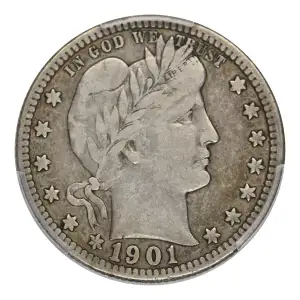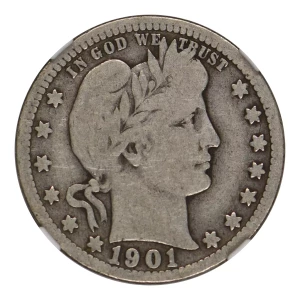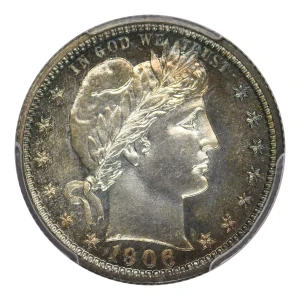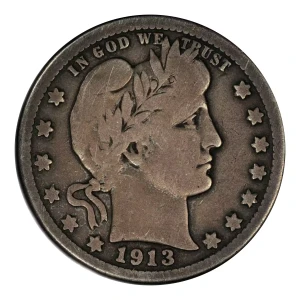By 1891, the public had grown weary of the Seated Liberty coinage that had clinked in their pockets for over 50 years. Consequently, U.S. Mint director Leech instructed Chief Engraver Charles E. Barber to prepare designs for the coins that now bear his name. The result was a new dime, quarter, and half dollar rendered in a distinctly neoclassical Roman design that drew influence from contemporary French coinage circulating in Europe. Like other Barber coins, the obverse of the Barber quarter features Liberty, facing right, wearing an olive branch crown termed a pileus, as well as a headband inscribed with LIBERTY. The Barber quarter and half dollar reverse designs depict a heraldic eagle with a shield modeled after the Great Seal of the United States. It holds a scroll in its beak inscribed with E PLURIBUS UNUM as well an olive branch and arrows in its talons. Above the eagle are 13 stars, the name of the country, and the denomination. This design is more elaborate than the Barber dime, which bears a simple wreath on the reverse. Barber coins were produced from 1892 through the middle of the first World War in 1916, except for the half dollar, which ended one year earlier.








